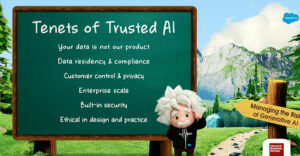
It used to be that your business could provide a basic level of service and yourcustomers would be perfectly happy. Some form of help, delivered at the speed ofthe business and within the parameters of your company’s policies, was usuallyOK — and if it wasn’t, you could probably get away with it. I mean, who would hearabout it, right?
Those days should never have been — and they’re gone forever now. We’re livingin a time when service and support are gaining the prestige they should havehad all along. This is partly because customer retention depends on them, andas the subscription economy continues to expand, retention is becoming betterunderstood as the key to profitability.
That’s what is driving the focus on service from the business side of the equation. But the pressure for better service is coming from the customer side. Part of this isbecause of the pent-up demand for better service; the success of service outlierslike Zappos and the attention they get is indicative of how ready customers are forbetter service.
Great Expectations
There’s more to it than just the yearning of customers for better service, though. They’re being conditioned to expect better service: more responsiveness, more complete answers, and more potential channels through which to contact the businesses they buy from.
What’s training customers to expect better service? Social media and mobile. Thetwo trends are changing the rules for interaction, and although they started byaltering how people connected to each other, they’re now altering the way peopleconnect to businesses.
Social media’s impact is obvious. Twitter offers ways to communicate service issues in a manner that’s more immediate than traditional service channels. The same is true of Facebook and other channels, to a lesser extent. Customers expect responses — quick ones — in ways that are absent from service channels such as email.
Right Here, Right Now
Social media has two other attributes that make it more attractive to manycustomers than telephone or email: First, it bypasses the often-byzantine processesthat plague service requests submitted through those older channels; second, itbrings the interaction out into the open.
When your service conversation takes place in public, suddenly it’s no longer aconcern confined in the support part of the organization. Marketing, PR and salessuddenly become enthusiastic fans of rapid resolution of service requests for their own reasons. That urgency often fuels greater allocation of resources for socialmedia-oriented service.
When this takes the form of a social media “layer” on top of still-broken service processes, customers discover they get faster service from the social media channel — and thus, their expectations shift for all service requests, regardless of channel.
Add to that mobility, and you really get the conditions for shifted expectations.When a customer can reach out from virtually anywhere and tap into the urgencythat service organizations feel about social, expectations change — customers want aresolution or an answer immediately, wherever they happen to be.
Tune Up All Channels
Those shifted expectations are challenging — and they’re even more daunting whenyou realize that customers don’t adjust their expectations as they move acrosschannels. Customers expect consistency. Providing the level of service needed tosatisfy mobile and social media will increase expectations for all the other channelsyou use to deliver service.
That, right there, is the challenge. If support is critical to customer retention, andif social and mobile channels are forcing you to up your game, then you need to up your game in the way you provide service over the phone, through email and via chat as well.
That’s not because customers will switch between preferred channels (althoughthey may, to take advantage of those channels’ unique capabilities) and thusexperience a dramatically different experience. It’s because customers share theirexperiences when they get rapid, effective reactions to service requests — and theyshare them with people who may use different channels.
Having one effective channel for service is not enough — it sets up an inconsistentexperience. Over time, it will overload and degrade your most effective servicechannel. Instead, strive to improve all your service channels by identifying those with specific strengths, and by thinking about ways to share those strengths across your entire service operation.






















































Social CRM
See all Social CRM